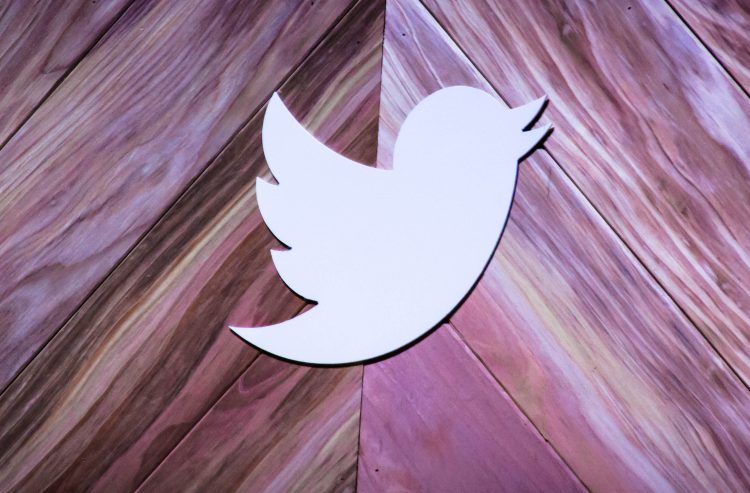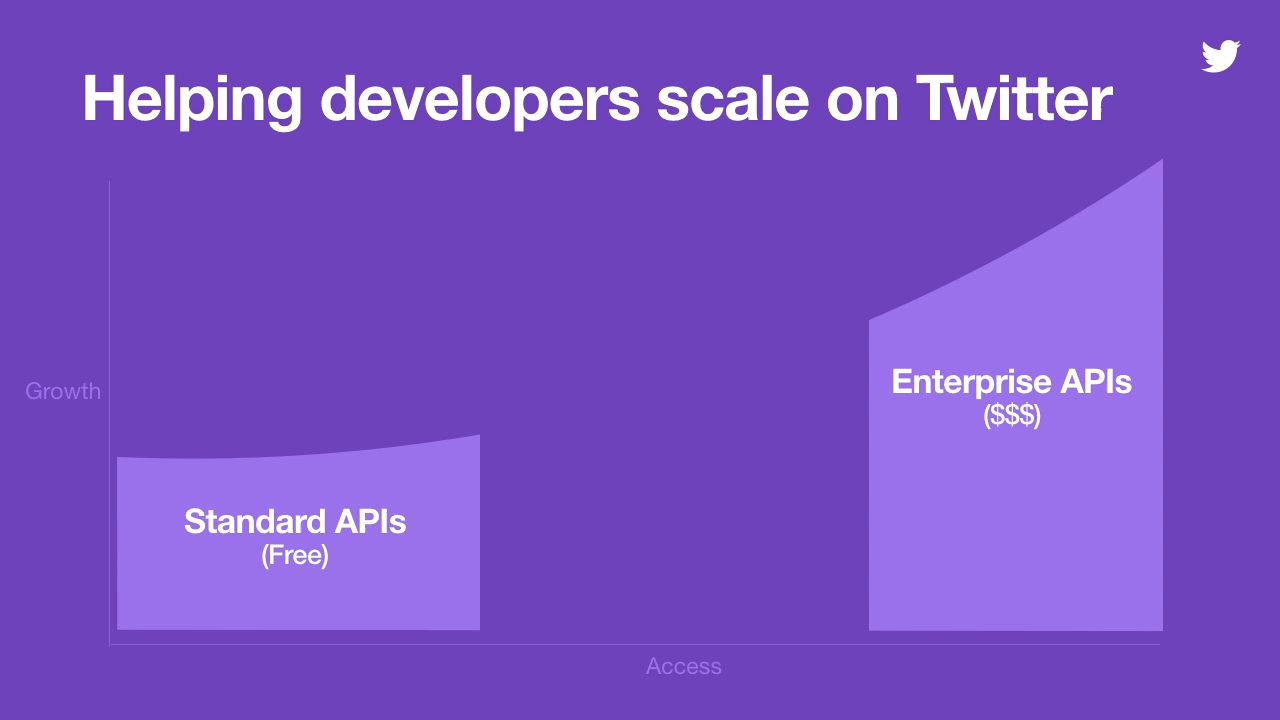Twitter is offering a solution for developers who are angry about limitations imposed on their apps when they use the service’s free APIs. The company has now introduced premium APIs to bridge the gap between the free service and the enterprise-level tools it provides through Gnip.
Available today in public beta is the first tool from the new API: historical search. With it, developers will be able to access tweets for the past 30 days and eventually as far back as CEO and cofounder Jack Dorsey’s inaugural tweet in 2006, a big upgrade from the previous limit of seven days. In addition, Twitter is now making available support for additional tweets per request, higher rate limits, more complex queries, and more.
“The new premium APIs bring the reliability and stability of our enterprise APIs to our broader developer ecosystem for the first time,” wrote Adam Tornes, a senior product manager at Twitter. “They include a clear upgrade path that scales access and price to fit your needs. We’ve built these new products to enable innovation.”
June 5th: The AI Audit in NYC
Join us next week in NYC to engage with top executive leaders, delving into strategies for auditing AI models to ensure fairness, optimal performance, and ethical compliance across diverse organizations. Secure your attendance for this exclusive invite-only event.
Twitter’s API rate limit has been a headache for developers since a 2012 blog post when the company declared that developers need permission if their apps would “require more than 100,000 individual user tokens.” This issue was again raised during Twitter’s 2015 #HelloWorld tour, in which Dorsey apologized for the company’s rocky relationship with developers and invited them to submit their specific concerns. One of the most-cited issues to emerge was Twitter’s API rate limits and token restrictions.
Plans for Twitter’s new premium APIs start at $149 per month and go all the way to $2,500. This is a marked difference from the company’s Gnip offering, as it lets developers pay monthly instead of annually. Here are the specifics for the premium APIs:
- Up to 500 requests/period: $149/month
- Up to 1,000 requests/period: $289/month
- Up to 2,500 requests/period: $699/month
- Up to 5,000 requests/period: $1,299/month
- Up to 10,000 requests/period: $2,499/month
With the premium APIs, developers can receive 500 tweets per request, 1024-character query length (up from 256), 60 requests per minute, and 10 requests per second, along with URL, polling, and public geo enrichments.
“There’s a huge gap, where if you’re a developer building something with Twitter’s free API, you’ll start to reach the rate limit and restrictions and can only go so far. Today, if you outgrow the free product, you have very few options. You can … upgrade to the enterprise-level offering, but it’s incredibly expensive and resource-intensive,” shared a Twitter spokesperson. “Enterprise-level APIs have been out of reach for the majority of developers. It’s been a huge pain point for a decade, [as] people wanted more elevated access to Twitter data through APIs and, in many cases, have offered to pay for it, but we haven’t had a solution for them.”
Twitter is also going to launch a self-serve developer portal for those using the premium APIs, with the goal of providing more “transparency” around data usage. Developers can monitor access and adjust their plans accordingly.
Premium APIs shouldn’t be a surprise, as they were featured in the developer roadmap Twitter published earlier this year. In a public Trello board, the company indicated that it was looking at additional APIs with self-managed access and additional endpoints, as well as developing advanced search capabilities.
Developers will likely welcome this solution, though many will also say it’s long overdue. After the company’s mea culpa at its Flight conference in 2015, Twitter has made efforts to understand developers’ needs and has reallocated resources, including selling its Fabric mobile developer platform to Google. Dorsey has said that his goal is to refocus the company on its core products and business to ensure long-term growth, and that involves public APIs.
One need only look at Twitter’s recent quarterly earnings to understand the impact of data. The company revealed in the third quarter that its data business was the “fastest-growing product area” and that it will likely play an increasing role in future.
Today we’re launching Twitter premium APIs to kick off the next era of innovation for Twitter developers. ?
These APIs provide a new transparent, predictable way to scale solutions on Twitter. https://t.co/4qtkeiUpDY pic.twitter.com/3FhH759Ik5
— API (@API) November 14, 2017
Twitter is asking parties interested in the new developer tools to fill out an application. This process asks for information like basic contact details and what developers will do with the data. A company spokesperson explained that the answers will help Twitter understand areas where it should invest, while also helping prevent abuse.
Updated as of 12:05 p.m. Pacific on Tuesday: This post has been updated to clarify that tweet search has been extended to 30 days, but eventually will be open to all tweets. Also, available now for developers through the Premium APIs are support for additional tweets per request, higher rate limits, more complex queries, and more.



